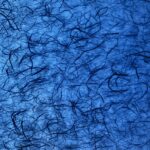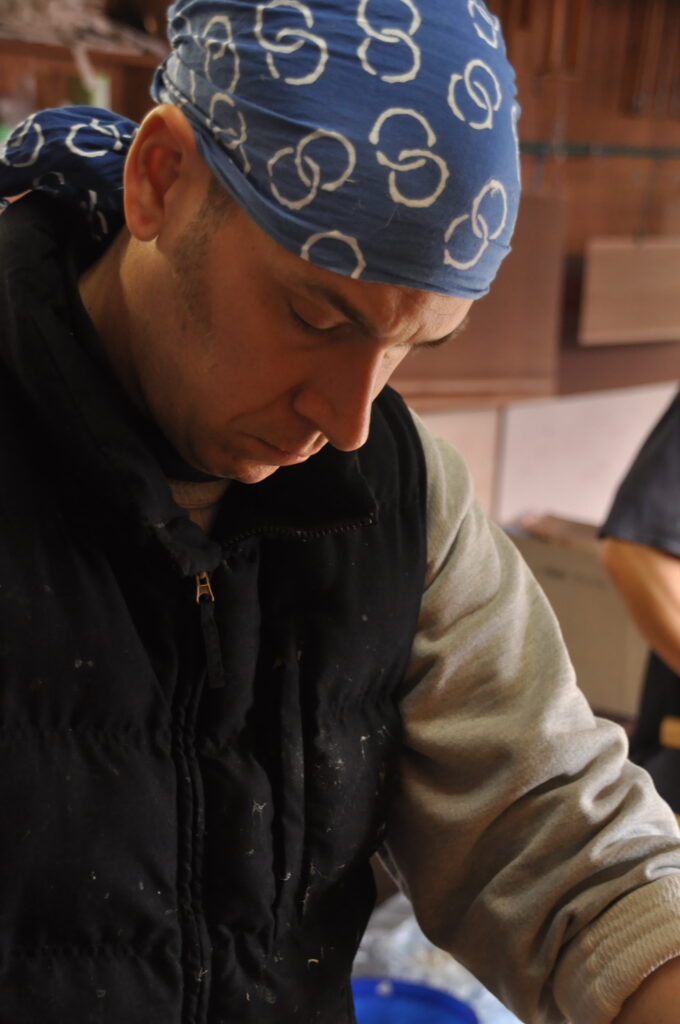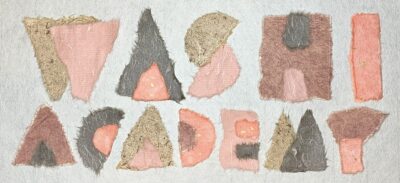
Tiny Scrap of Blue
Almost 35 years ago, a friend showed me a small sample of blue unryu paper with threads of fibre running through it. I remember being transfixed, but at the time, in a small town outside of Toronto, I had no idea that moment would lead me to where I am today. What started as a simple curiosity would lead to a 25-year journey in Japan that would allow me to truly see the delicate threads connecting past and present, connecting materials, seasons, and human hands, connecting teacher and student.
Getting It
The journey from that blue scrap to actual understanding took decades. There were countless failures and all too many moments of “I’ll never get this.” But over the years, incredible opportunities opened: my first trip to Japan in 1995, studying with the leading Western authority on the craft, earning a government research scholarship, and eventually working alongside incredibly talented papermakers who became my teachers. What I discovered through all these opportunities was that the real education came not just from learning techniques, but from understanding the cultural context and generations of knowledge embedded in each process, in each sheet. Slowly, through years of this deeper engagement, I began to get it. Those experiences taught me that true mastery meant more than personal understanding — it meant actively positioning myself as a link in the storied progression of transmitting the secrets of the craft.
Evolution
Hand papermaking is deceptively simple and endlessly complex. In Japan, I learned that the craft is intimately tied to nature and seasons — kozo plants harvested in winter’s dormancy and transformed directly into paper, formation aid derived directly from the roots or bark of plants, sheets formed at one time of the year are markedly different in character from those made in a different season. The slow, methodical work holds opportunity for growth at every turn. I slowly moved from pursuing flawless sheets to recognizing the beauty, inevitability, and profundity of what I’d once called flaws. That small clump of fibre in a corner illustrates how clean and beautiful the rest of the sheet is, and testifies to the production of the sheet by hand. Working alongside master papermakers, I learned that sheet-forming technique is only part of the story. The real craft lies in quieter moments: feeling how yesterday’s rain changed the fiber’s behavior, noticing the slight difference in how the sugeta (mould) slides into the vat that means your suspension system needs adjustment, or sensing when the vat temperature has shifted just enough to affect formation. This intuition comes only through years of practice — and countless imperfect sheets. What surprised me most was how this demanding craft became a path to patience, presence, and contentment. This transformation made me realize that others could benefit from the same journey, which brought me back to a vision I’d carried for decades.
Making a Place
Even 30 years ago, when I was just beginning to understand what that blue scrap represented, I had a vision: “I want to make a place where anybody, anywhere, can easily access this knowledge — not just techniques, but the deeper understanding that comes from knowing how and why these processes work.” After 25+ years of immersion in this tradition, I finally felt ready to make that vision real. These techniques, refined over generations, face the same pressures as many traditional crafts in our modern world. But preservation isn’t about freezing methods in amber. The word ‘traditional’ is deceptive. What we call traditional today was once innovative, even groundbreaking. True preservation means understanding historical ways without being enslaved by them — knowing the rules so you can break them meaningfully when your work demands it. What drives me now is witnessing that moment when the next link in the chain finally “gets it,” then seeing how this understanding enriches their own creative practice. That transformation — from struggle to insight to personal application — is its own profound reward. That is the heart of Washi Academy.
Bridging
Teaching traditional Japanese papermaking as a Westerner brings unique challenges and opportunities. I can’t teach as a Japanese craftsperson would, but I can serve as a translator between worlds. When a master papermaker in Japan adjusts your hand position without explanation, they’re drawing on decades of intuitive knowledge. I can explain why this seemingly small adjustment prevents back strain and how it connects to consistency in sheet forming. My role is to make authentic traditions accessible without diluting them. I bridge not by simplifying, but by providing the cultural and technical context that helps Western students truly understand what they’re learning and why it matters.
Community
Washi Academy grew from my belief in the importance of establishing a community of practitioners, creating resources that didn’t exist, and connecting traditional and contemporary makers. My hope is that every student who joins our community to study traditional papermaking carries forward not just techniques, but deeper values that have the potential to enrich contemporary creative practice, such as patience, attention to materials, respect for process, and connection to place and season.
The path from that blue scrap to Washi Academy has been transformative. If you’re drawn to the patient, meditative work of hand papermaking, or feel the call from your own blue scrap moment, I invite you to join our community!

